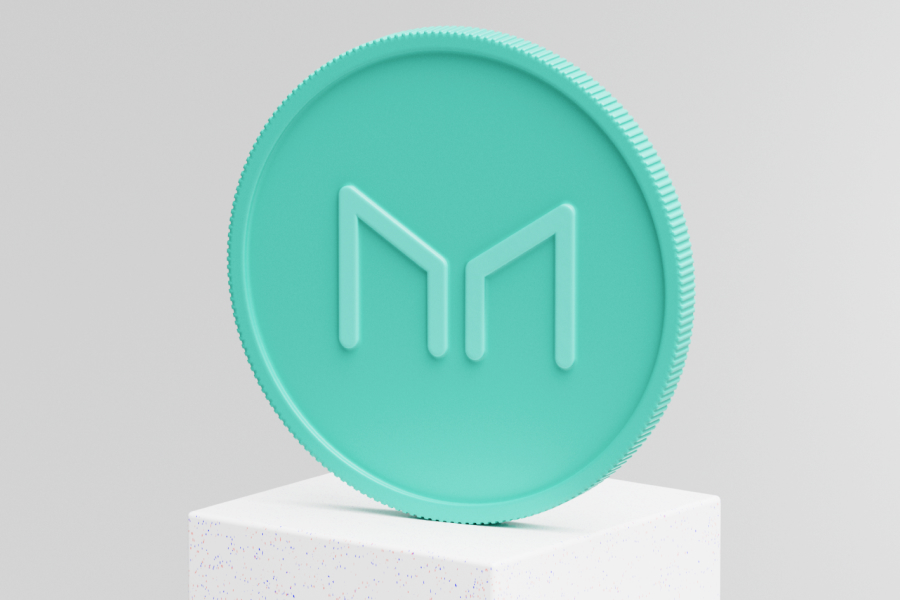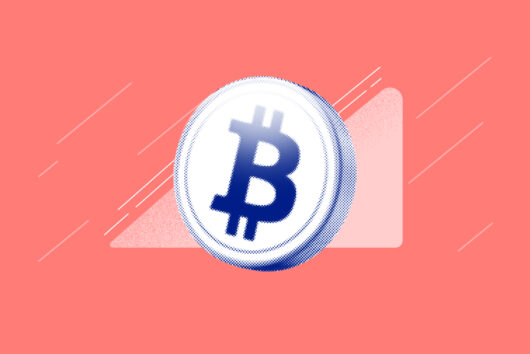What is MakerDAO (MKR)?


MakerDAO, or simply Maker, is a decentralised cryptocurrency platform that enables users to access temporary liquidity through the Dai stablecoin, which is pegged to the US Dollar. Effectively, they can take out loans in Dai.
Users generate Dai by locking up the Maker cryptocurrency in the MakerDAO system, giving them the stability of a stablecoin in return for small interest payments without selling their underlying assets.
This is particularly useful for managing risk in a volatile market, accessing liquidity without triggering capital gains tax, or when you need a stable and predictable unit of value, such as Dai, during times of high volatility for more unstable assets.
How does this work in practice?
- Consider a cryptocurrency investor who wants to access liquidity in the short-term but doesn’t want to sell their Ethereum, which may have appreciated significantly in value. Instead of selling Ethereum and incurring potential capital gains tax, the investor decides to use MakerDAO.
- They can lock up a portion of their Ethereum as collateral in a Collateralized Debt Position (CDP) and generate Dai, a stablecoin pegged to the US dollar.
- The investor can use the generated Dai for their intended purpose without exposing themselves to the volatility associated with holding cryptocurrencies directly. This allows them to benefit from the stability of Dai while retaining ownership of their Ethereum.
- To regain access to their crypto, users need to pay back the Dai they’ve generated, plus a stability fee. The stability fee is determined through the governance process and contributes to maintaining the peg of Dai to the US Dollar.
- In essence, this is a decentralised way of taking out a loan. Users provide their crypto as collateral in exchange for DAI, and need to pay back what they borrowed plus “interest” (the stability fee) to receive their collateral back. And this is all done without a centralised authority setting the terms.
How does Maker work?
Collateralisation
Users who want to generate Dai must first lock up their Ethereum-based crypto as collateral in a smart contract known as a Collateralized Debt Position.
Dai generation
Once the assets are locked in a CDP, users can generate Dai. The amount generated is determined by the value of the collateral and a collateralization ratio. For example, if a user locks up $150 worth of ETH with a collateralization ratio of 150%, they can generate up to $100 worth of Dai.
Stability mechanisms
MakerDAO uses stability mechanisms to ensure that Dai maintains its peg to the US Dollar. One key mechanism is the stability fee, which is an interest rate charged on generated Dai. The stability fee helps regulate the supply of Dai by discouraging excessive generation.
Debt auctions and surplus auctions –
If a CDP becomes undercollateralised due to changes in the value of the locked crypto, the system may initiate a “Debt Auction” to sell off the underlying crypto and recover Dai. Additionally, if there is excess Dai in the system, a “Surplus Auction” may be triggered to buy back and burn MKR crypto, maintaining the stability of the protocol.
What is the cryptocurrency of MakerDAO?
MakerDAO involves two cryptocurrencies: Dai (DAI) and Maker (MKR). Here’s how they interact within the MakerDAO ecosystem.
Dai is the stablecoin created within the MakerDAO system. It is designed to be pegged to the value of the US dollar, maintaining stability in its purchasing power. Users can generate Dai by locking up collateral (mainly Ethereum) in Collateralized Debt Positions (CDPs). Dai is widely used in decentralized finance (DeFi) applications and serves as a stable unit of account within the cryptocurrency ecosystem.
Maker (MKR) is the governance and utility crypto of the MakerDAO protocol. MKR holders can participate in the decentralised governance of MakerDAO, allowing them to vote on proposals that impact the protocol, such as changes to stability fees, collateral types, and other parameters. MKR also serves a critical role in the system’s risk management. In the event of under collateralisation, MKR tokens can be created and sold to cover the debt to stabilise the system.
The interaction between Dai and Maker involves the process of creating Dai through collateralized debt positions (CDPs). Users lock up Ethereum (ETH) or other accepted cryptos as collateral, and in return, they generate Dai. The stability of Dai is maintained through decentralised governance, stability mechanisms, and auctions that involve MKR tokens.
Who was the founder of MakerDAO?
Maker was created in 2015 under the leadership of Rune Christenson. The primary problem that MakerDAO aimed to solve was the volatility commonly associated with cryptocurrencies like Bitcoin and Ethereum. The founders sought to create a stablecoin, Dai (DAI), that would maintain a stable value while still operating within a decentralised framework. The idea was to provide a reliable and decentralised alternative to traditional stablecoins, which are often issued by centralised entities and require trust in the issuer.
In 2023, Christenson revealed a shakeup of Maker with a plan he called “Endgame”. The plan was designed to overhaul and improve the governance and tokenomics of the Maker ecosystem. Its primary aim is for the ecosystem to reach a self-sustainable state called the “Endgame State”, where the ecosystem is resilient, and the scope and complexity of Maker Core will no longer change.
The Endgame Plan consists of five phases, including a complete reimplementation of the Maker Protocol and the launch of a native blockchain for Maker with the codename NewChain.
The plan also involves rebranding Maker, changing decision-making processes, and empowering subsidiary entities called sub-DAOs to handle most decision-making for the protocol. The Endgame Plan is intended to offer guidance on decentralisation, risk, frontend governance, voter committees.
How is Maker structured?
MakerDAO is a decentralised organisation, but the structure has evolved over time. The Maker Foundation initially managed the protocol and its teams, making necessary upgrades, and promoting its use around the world. However, over time the Maker Foundation has continued to gradually hand over operations entirely to MakerDAO, its decentralised autonomous organisation.
Useful tools
Maker blog
Maker white paper
Maker on X
*Investing in cryptocurrency may result in the loss of capital as the value can fluctuate. This information should not be construed as a solicitation to trade. All opinions, news, research, analysis, prices or other information is provided as general market commentary for information purposes only and is not investment advice or recommendation. Luno always advises you to obtain your own independent financial advice before investing or trading in cryptocurrency.
 Discover
Discover Help Centre
Help Centre Status
Status Company
Company Careers
Careers Press
Press
